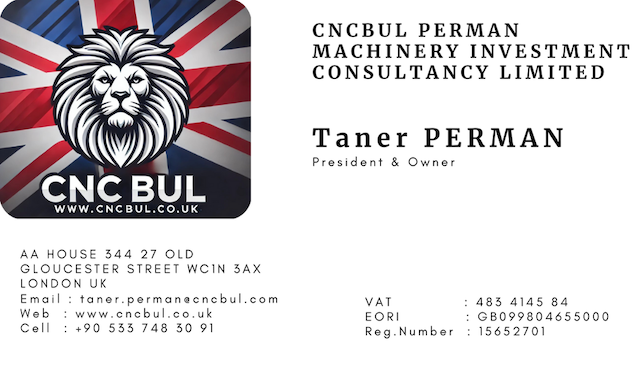What is Smart Factories and CNC: The impact of Industry 4.0 on CNC machines?
Smart Factories and CNC: The Impact of Industry 4.0 on CNC Machines
The concept of smart factories and the impact of Industry 4.0 on CNC machines represent a significant evolution in manufacturing technologies. Industry 4.0, often referred to as the fourth industrial revolution, is characterized by the integration of cyber-physical systems, the Internet of Things (IoT), big data analytics, and advanced automation. This transformation brings about a new era of manufacturing efficiency, precision, and adaptability, particularly affecting CNC (Computer Numerical Control) machines.
1. Introduction to Smart Factories
A smart factory leverages digital technologies to create a highly connected and flexible manufacturing environment. It involves the integration of various advanced technologies such as IoT, AI (Artificial Intelligence), machine learning, cloud computing, and edge computing. These technologies enable real-time monitoring, autonomous decision-making, and seamless communication across all manufacturing processes.
2. Industry 4.0 Principles
Industry 4.0 is built on several core principles that directly influence CNC machining:
- Interconnectivity: Machines, devices, sensors, and people are connected via IoT.
- Information Transparency: Systems create a virtual copy of the physical world through sensor data to provide context.
- Technical Assistance: Systems assist humans in decision-making and problem-solving and help with tasks that are too difficult or unsafe.
- Decentralized Decisions: Cyber-physical systems make decisions on their own and perform tasks autonomously.
3. Technological Components of Industry 4.0
The implementation of Industry 4.0 in CNC machining involves several key technologies:
- Internet of Things (IoT): IoT enables CNC machines to communicate with other machines, systems, and humans, providing real-time data exchange and remote monitoring capabilities.
- Cyber-Physical Systems (CPS): These systems integrate computation with physical processes, allowing CNC machines to be controlled and monitored by computer-based algorithms.
- Big Data and Analytics: The vast amount of data generated by CNC machines can be analyzed to optimize production processes, predict maintenance needs, and improve overall efficiency.
- Artificial Intelligence (AI) and Machine Learning: AI algorithms can be used to optimize tool paths, improve machine accuracy, and predict potential failures.
- Cloud Computing: Cloud-based platforms enable centralized data storage and processing, facilitating better data management and accessibility.
- Augmented Reality (AR): AR can be used for maintenance support, training, and remote troubleshooting, providing real-time visual guidance to operators.
4. Impact on CNC Machines
The impact of Industry 4.0 on CNC machines is profound, enhancing their capabilities and efficiency in several ways:
a. Enhanced Connectivity and Communication
- Real-Time Monitoring: IoT sensors on CNC machines provide real-time data on machine performance, tool wear, and production metrics. This data is transmitted to central systems for analysis and decision-making.
- Machine-to-Machine (M2M) Communication: CNC machines can communicate with other machines in the production line, ensuring coordinated operations and optimizing workflows.
b. Advanced Predictive Maintenance
- Condition Monitoring: Continuous monitoring of machine components such as spindles, motors, and bearings allows for early detection of potential issues.
- Predictive Analytics: By analyzing historical data and current operating conditions, predictive models can forecast when maintenance is required, reducing downtime and extending the life of machine components.
c. Optimized Production Processes
- Adaptive Control: CNC machines can adjust their operating parameters in real-time based on feedback from sensors, ensuring optimal cutting conditions and improving product quality.
- Process Automation: Integration with automated material handling systems and robots enables fully automated production lines, reducing human intervention and increasing throughput.
d. Improved Flexibility and Customization
- Rapid Changeovers: CNC machines can quickly adapt to different production tasks through software reconfigurations, allowing for greater flexibility in manufacturing.
- Customization at Scale: Smart factories can produce customized products without sacrificing efficiency, meeting the growing demand for personalized products.
e. Data-Driven Decision Making
- Performance Optimization: Data from CNC machines is analyzed to identify bottlenecks, optimize tool paths, and improve overall process efficiency.
- Quality Control: Real-time data analysis enables immediate detection of deviations from quality standards, allowing for quick corrective actions.
f. Human-Machine Collaboration
- Augmented Reality (AR) for Maintenance: AR provides technicians with real-time visual guidance during maintenance tasks, reducing errors and improving efficiency.
- Training and Skill Development: AI-driven training programs and simulators help operators develop the necessary skills to work with advanced CNC machines and understand complex processes.
5. Challenges and Considerations
While the benefits of Industry 4.0 and smart factories are substantial, there are challenges that manufacturers must address:
- Data Security: With increased connectivity comes the risk of cyber-attacks. Implementing robust cybersecurity measures is critical to protect sensitive data and ensure operational integrity.
- Integration Complexity: Integrating new technologies with existing systems can be complex and require significant investment in both time and resources.
- Skill Requirements: The transition to smart factories demands a workforce with advanced technical skills and knowledge in digital technologies.
6. Future Trends
The future of CNC machining in the context of Industry 4.0 looks promising, with several emerging trends:
- Digital Twins: The creation of digital twins, virtual replicas of physical machines, allows for advanced simulations, performance monitoring, and optimization.
- Edge Computing: Processing data at the edge of the network, closer to the CNC machines, reduces latency and enables faster decision-making.
- Collaborative Robots (Cobots): Integration of cobots with CNC machines enhances automation and allows for safer human-machine collaboration.
- Sustainable Manufacturing: Industry 4.0 technologies can help reduce waste, energy consumption, and environmental impact through more efficient and optimized processes.
Conclusion
The integration of Industry 4.0 technologies into CNC machining transforms traditional manufacturing into highly efficient, flexible, and intelligent operations. By leveraging advanced connectivity, data analytics, automation, and AI, smart factories enhance the capabilities of CNC machines, driving improvements in productivity, quality, and customization. While challenges exist, the ongoing evolution of these technologies promises a bright future for the manufacturing industry, marked by continued innovation and growth.

